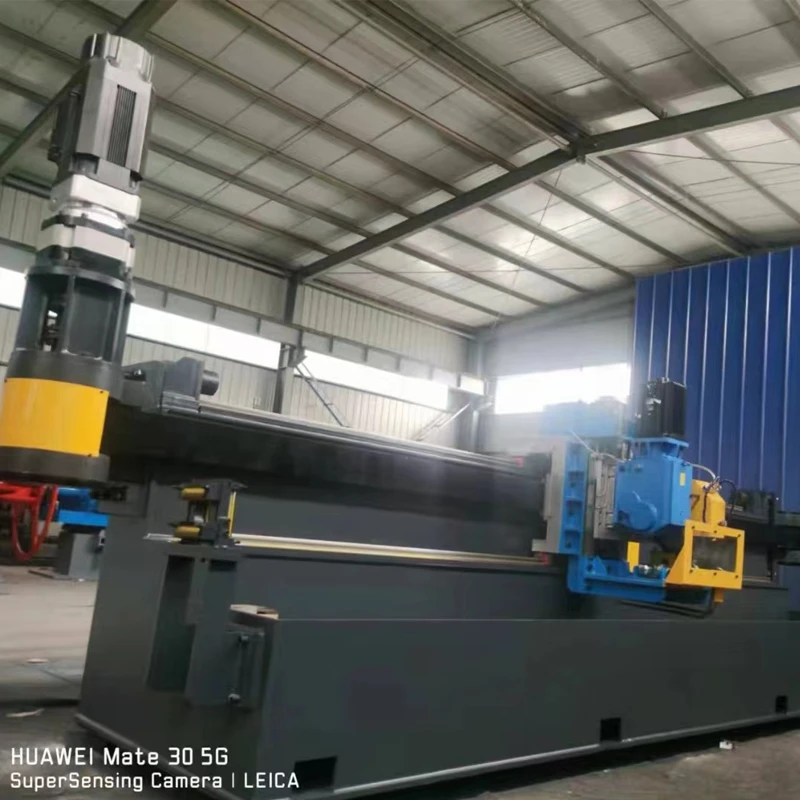Efficient Solutions for Tube Straightening Machinery in Industrial Applications
Understanding Tube Straightening Machines
In the world of manufacturing and metalworking, the straightening of tubes—be they metal, plastic, or other materials—is a crucial step that can significantly affect the final product's quality and performance. Tube straightening machines play a vital role in this process, ensuring that tubes meet the required specifications and tolerances.
What is a Tube Straightening Machine?
A tube straightening machine is a specialized piece of equipment designed to remove bends, kinks, and other imperfections from tubular materials. These machines are essential for producing straight, uniform tubes that are essential in various applications, including construction, automotive, aerospace, and many industrial processes.
How Do Tube Straightening Machines Work?
The operation of tube straightening machines often involves several key components and mechanisms. Typically, a tube is fed into the machine, where it passes through multiple rollers or straightening elements. These rollers are strategically positioned to exert controlled pressure on the tube at specific points, gently pressing out any irregularities.
The process begins with a careful assessment of the tube's initial condition. Advanced machines are equipped with digital monitoring systems that can detect bends or irregularities in real-time. Once the machine identifies these inconsistencies, it applies the appropriate force to straighten the tube effectively. This process may vary depending on the tube's material, diameter, and the degree of deformation.
Types of Tube Straightening Machines
There are several types of tube straightening machines available, each designed for specific applications
1. Mechanical Straighteners These machines utilize mechanical systems and levers to provide force on the tube. They are often used for smaller, less complicated jobs.
tube straightening machine

2. Hydraulic Straighteners These are more powerful machines that use hydraulic systems to apply significant force to the tube, making them suitable for larger or thicker tubes.
3. Roller Straighteners This type consists of a series of rotating rollers that gradually correct the tube’s shape as it passes through the machine. Roller straighteners are ideal for continuous production processes.
4. Digital Straighteners The latest technology in tube straightening involves digital control systems, which allow for precise calibration and adjustment. Operators can program specific parameters based on the material's properties and desired specifications, enhancing efficiency and reducing waste.
Applications of Tube Straightening Machines
The applications of tube straightening machines are diverse and span multiple industries. In the automotive sector, straightened tubes are vital for structural components, exhaust systems, and fuel lines. In construction, they are used for scaffolding, supports, and pipelines. Aerospace applications also rely on precisely straightened tubes to ensure safety and performance in flight operations.
Benefits of Using Tube Straightening Machines
Investing in tube straightening machines offers numerous advantages. The primary benefit is improved product quality. Straightened tubes provide better structural integrity, reducing the likelihood of failure during use. Additionally, streamlined processes enable higher production rates, ultimately leading to cost savings. The automation and precision offered by modern machines also mean less manual intervention, contributing to a safer working environment.
Conclusion
In summary, tube straightening machines are indispensable in the manufacturing arena, ensuring that tubes meet the high standards required in various industries. By understanding the different types of machines available and their specific functions, businesses can better optimize their processes, improve product quality, and increase operational efficiency. As technology continues to advance, future innovations in tube straightening are likely to enhance these benefits even further, driving progress across multiple sectors.
-
High Frequency Straight Seam Welded Pipe Production Line-BzZhou Xinghua Machinery Equipment Manufacturing Co., LTD.|line pipe steel&welded gas pipeNewsJul.30,2025
-
High Frequency Straight Seam Welded Pipe Production Line-BzZhou Xinghua Machinery Equipment Manufacturing Co., LTD.|High Precision&Automated SolutionsNewsJul.30,2025
-
High Frequency Straight Seam Welded Pipe Production Line - BzZhou Xinghua Machinery Equipment Manufacturing Co., Ltd.NewsJul.30,2025
-
High Frequency Straight Seam Welded Pipe Production Line-BzZhou Xinghua Machinery Equipment Manufacturing Co., LTD.|Precision Welding, High EfficiencyNewsJul.30,2025
-
High Frequency Straight Seam Welded Pipe Production Line|BzZhou Xinghua|Precision Welding&EfficiencyNewsJul.30,2025
-
High Frequency Straight Seam Welded Pipe Production Line - BzZhou Xinghua|Precision Engineering&EfficiencyNewsJul.30,2025


